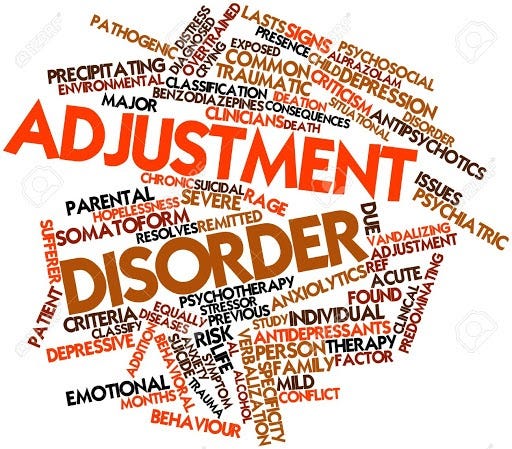Life is full of changes, both big and small. While some changes can be exciting and positive, others can be stressful and challenging. It’s normal to feel a range of emotions in response to life changes, but for some people, these feelings can become overwhelming and lead to adjustment disorders. In this article, we’ll explore what adjustment disorders are, how to recognize them, and strategies for managing them.
What Are Adjustment Disorders?
Adjustment disorders are a group of conditions characterized by emotional or behavioral symptoms that develop in response to a stressful life event. Unlike other mental health conditions, such as depression or anxiety disorders, adjustment disorders are directly linked to a specific stressor and typically resolve once the stressor is removed or the individual adapts to the change.
Recognizing Adjustment Disorders
Recognizing adjustment disorders involves paying attention to changes in your thoughts, feelings, and behaviors in response to a stressful life event. Common signs and symptoms of adjustment disorders include:
- Feeling sad, hopeless, or overwhelmed
- Experiencing anxiety, nervousness, or worry
- Difficulty concentrating or making decisions
- Changes in appetite or weight
- Sleep disturbances, such as insomnia or excessive sleepiness
- Withdrawing from social activities or relationships
- Engaging in reckless or impulsive behavior
Managing Adjustment Disorders
If you suspect you or someone you know may be experiencing an adjustment disorder, there are several strategies that can help manage symptoms and promote recovery:
- Seek Support: Talking to friends, family members, or a mental health professional can provide emotional support and help you navigate your feelings and experiences.
- Practice Self-Care: Engage in activities that promote relaxation and well-being, such as meditation, yoga, or spending time in nature. Taking care of your physical health by eating well and getting regular exercise can also help improve your mood.
- Set Realistic Goals: Break tasks down into manageable steps and set achievable goals for yourself. Celebrate your accomplishments, no matter how small, and be patient with yourself as you work toward recovery.
- Maintain a Routine: Establishing a regular routine can provide a sense of stability and predictability, which can be comforting during times of stress.
- Limit Stress: Identify sources of stress in your life and take steps to minimize them. This may involve setting boundaries, delegating tasks, or seeking professional help to address underlying issues.
- Consider Therapy: Psychotherapy, such as cognitive behavioral therapy (CBT), can help you identify and change negative thought patterns and behaviors that contribute to your symptoms.
- Medication: In some cases, medication may be prescribed to help manage symptoms of anxiety or depression. It’s important to work closely with a healthcare provider to determine if medication is right for you and to monitor its effects.
Conclusion
Adjustment disorders are a common and treatable mental health condition that can occur in response to stressful life events. By recognizing the signs and symptoms of adjustment disorders and implementing strategies for managing them, you can navigate life changes more effectively and improve your overall well-being. If you or someone you know is struggling with adjustment disorders, don’t hesitate to seek help from a mental health professional. With the right support and strategies, recovery is possible.



